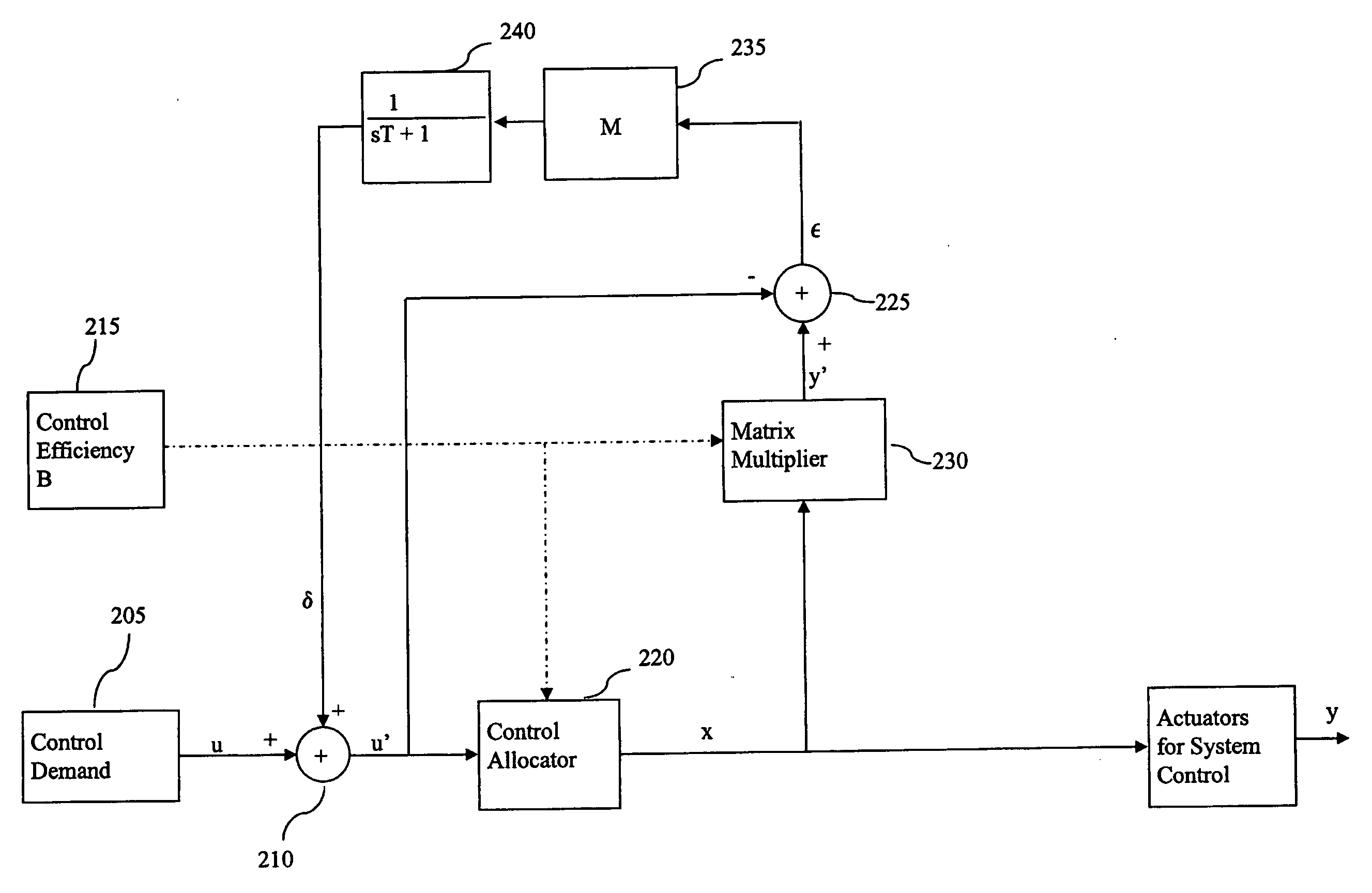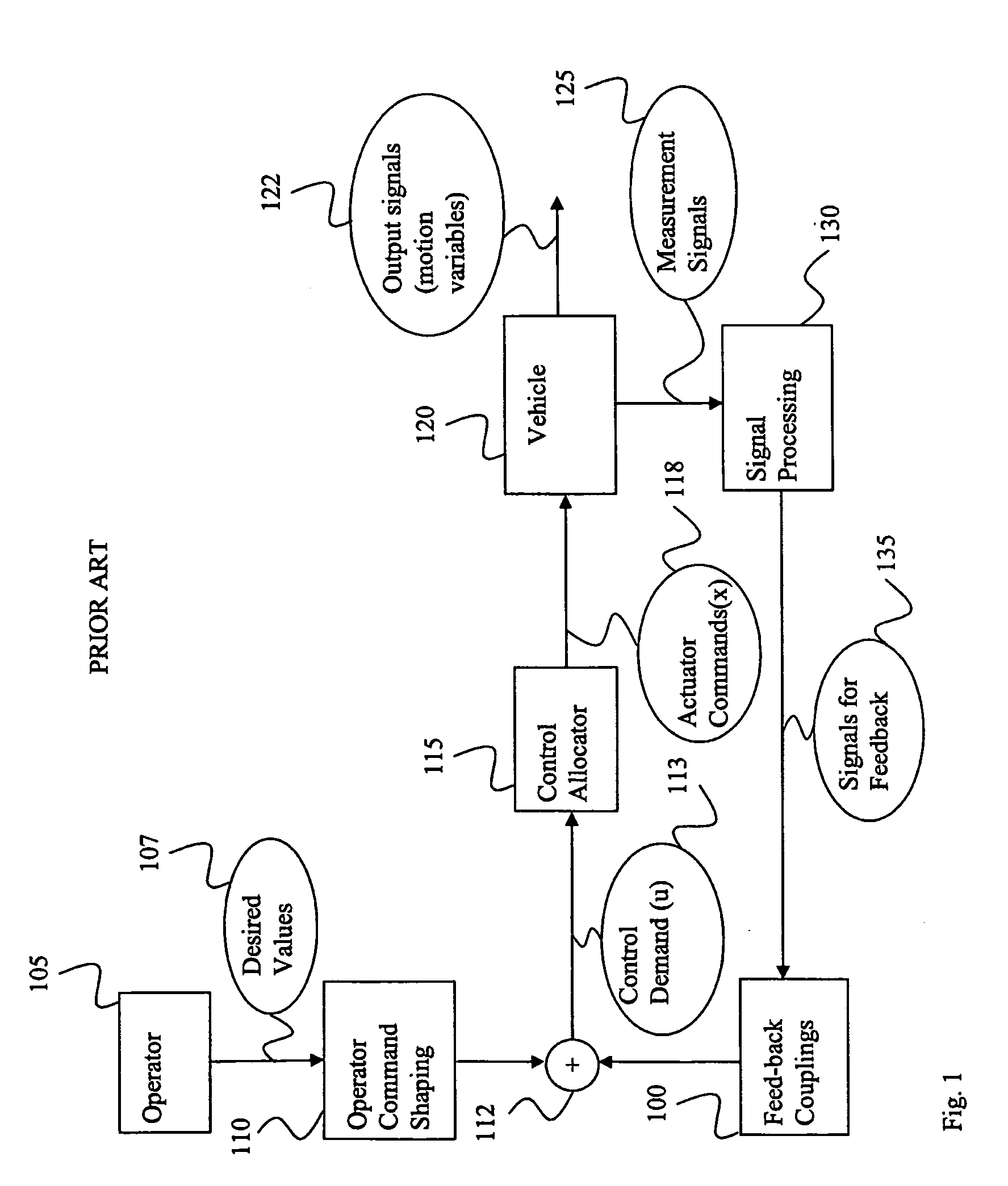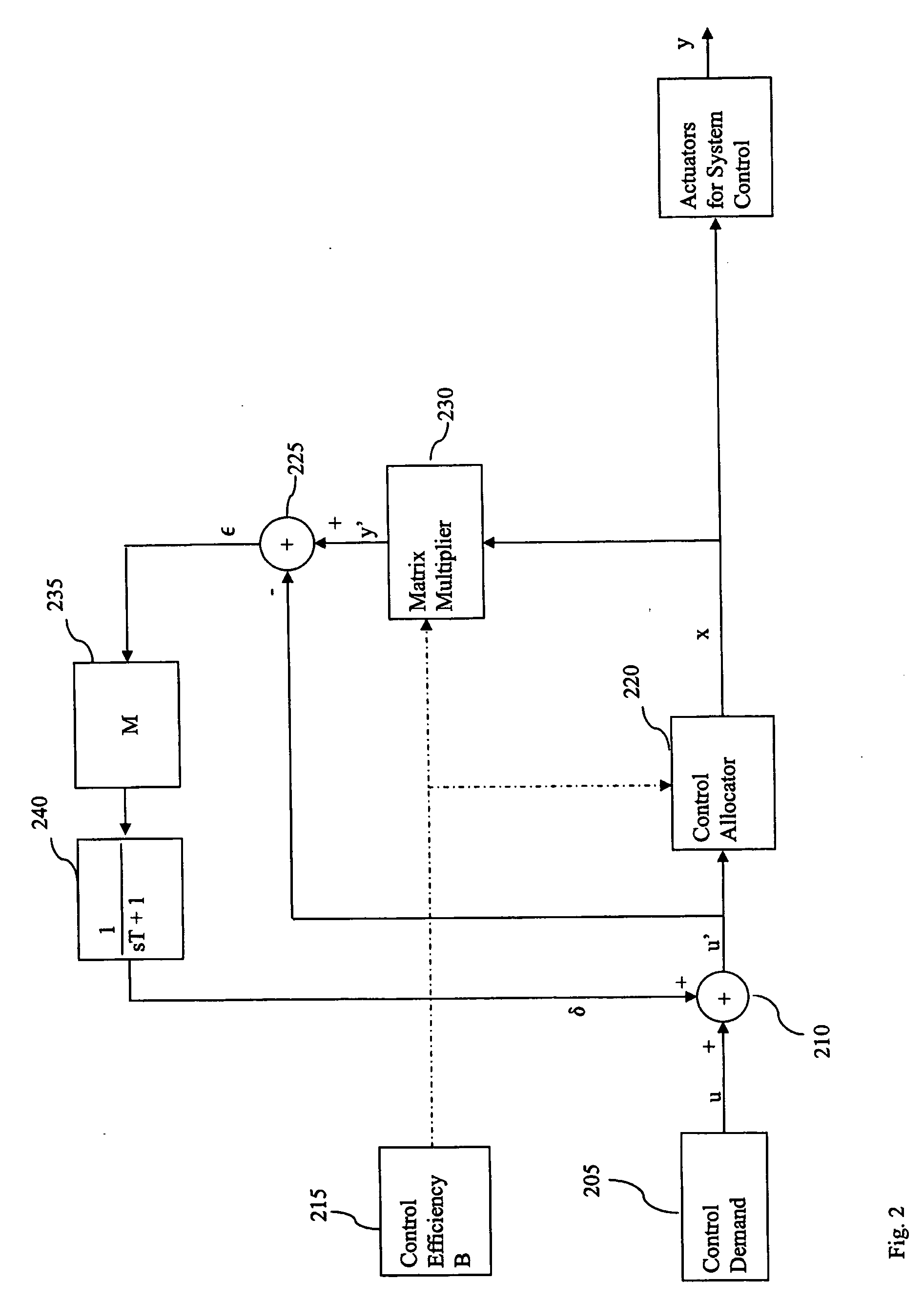Vehicle control system and method using control allocation and phase compensation
a control system and vehicle technology, applied in adaptive control, process and machine control, instruments, etc., can solve the problems of inability to meet input, inability to adapt to distribution, and inability to move the control surface freely
- Summary
- Abstract
- Description
- Claims
- Application Information
AI Technical Summary
Benefits of technology
Problems solved by technology
Method used
Image
Examples
Embodiment Construction
[0050]FIG. 1 shows a block diagram, demonstrating signal flow within a vehicle control allocation control system according to known technology. An operator, e.g., a pilot 105 or a travel control unit of an autonomous vehicle communicates desired values of vehicle state or waypoints or reference values in speed, altitude and course to the vehicle control system by some means e.g. by control stick movements, pedal movements or by conveying suitable signals, as in the case with an autonomous vehicle. The travel control system comprises an Operator Command Shaping Unit 110 that receives said desired values and filters them.
[0051]The filtered desired values are subsequently fed to a summation unit 112—In the summation unit 112 feedback signals and the filtered desired values are added together forming a sum. The sum may e.g. represent ordered angular accelerations of vehicle attitude angles. A control allocator 115 translates the ordered angular accelerations of vehicle attitude angles i...
PUM
 Login to View More
Login to View More Abstract
Description
Claims
Application Information
 Login to View More
Login to View More - R&D
- Intellectual Property
- Life Sciences
- Materials
- Tech Scout
- Unparalleled Data Quality
- Higher Quality Content
- 60% Fewer Hallucinations
Browse by: Latest US Patents, China's latest patents, Technical Efficacy Thesaurus, Application Domain, Technology Topic, Popular Technical Reports.
© 2025 PatSnap. All rights reserved.Legal|Privacy policy|Modern Slavery Act Transparency Statement|Sitemap|About US| Contact US: help@patsnap.com



